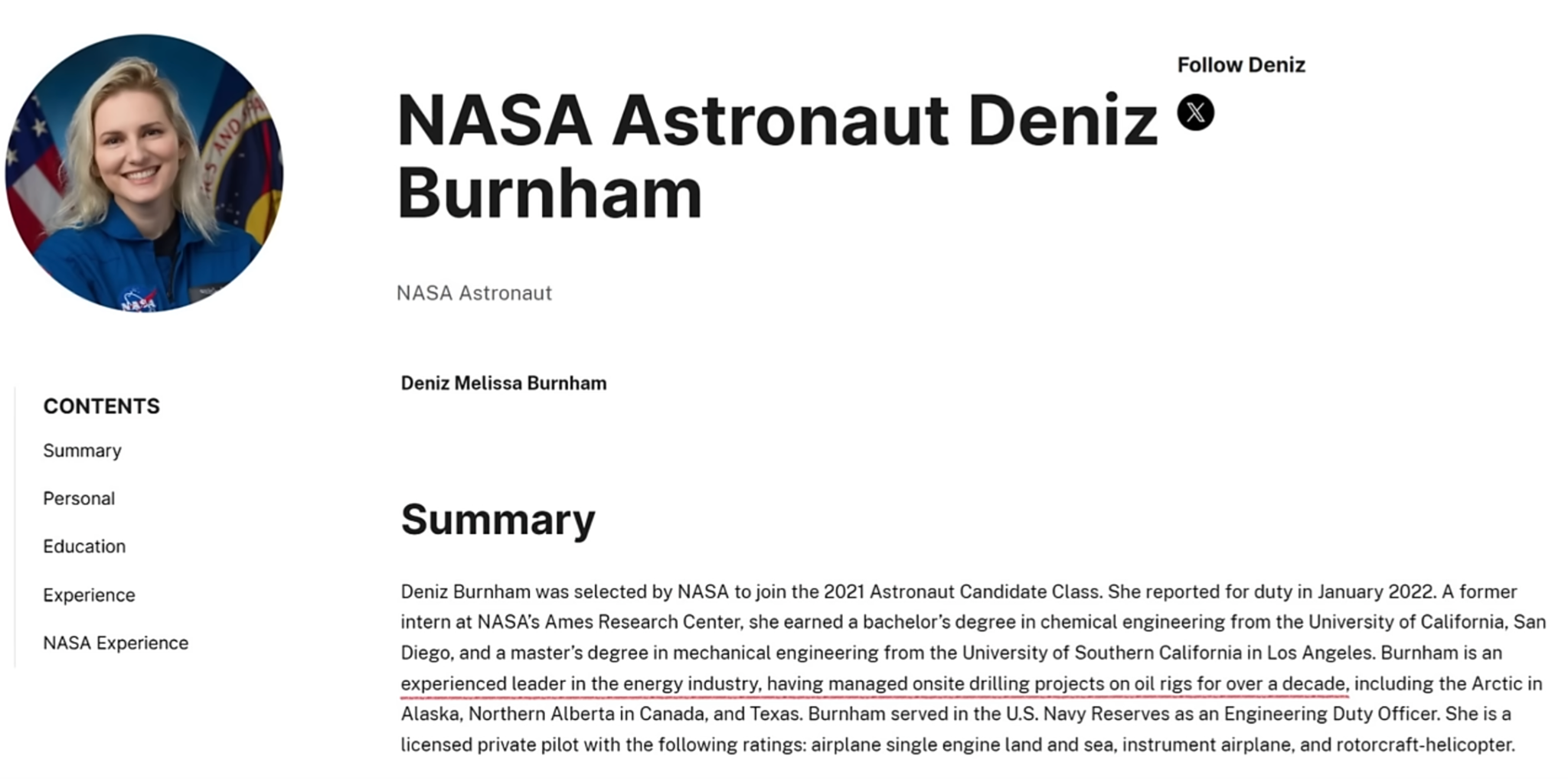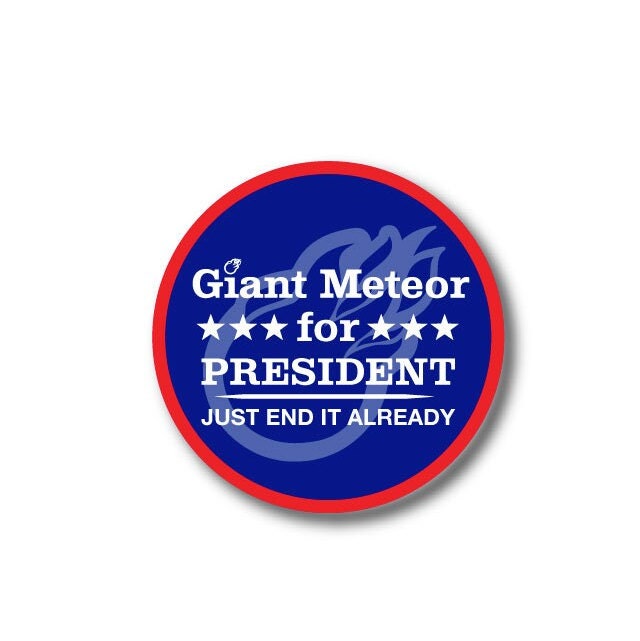Ngl at this point I’m rooting for the space rock
The space rock is likely not going to hit earth. If it does it’s unlikely to hit land. If it does, it’s unlikely to hit major population centers.
If it defies all odds and does that, it’s going to happen in a location that is already struggling, and not in an area that’s causing the suffering.
First reference to Bruce Willis.
https://www.nasa.gov/people/nasa-astronaut-deniz-burnham/
We don’t need Bruce Willis, we have Deniz Burnham.

Finally, some good news in the current media cycle
First reference to Bruce Willis.
Here’s my nominee to head up the “study”

Don’t look up
Cricket.
But we might be able to mine it for trillions. Think of all the cell phones we could make!
That’s like a new model every 3 to 6 months!
in 2032
Can someone tell it to hurry up already?
There’s a study that says the effects of an impact landing in water won’t be as bad as thought.
Also there is a way of using nukes to detonate adjacent to an asteroid or comet that slows it down without a risk of fracturing it. The heat turns the surface red hot and makes it shoot out mass and slows it down more. So we can stop basically any asteroid as long as we see it.
Armageddon?
I don’t wanna close my eyes!
The difference from the movie is that we should just end it already and force the asteroid to collide specifically to destroy us.
Bro relax, America can destroy itself in Civil War 2 before the asteroid is even near. No need to wish it on the rest of earth.
Yeah I wonder if we’ll remember to look at the asteroid in 4 years when the orange dipshit is faking or cancelling elections. If he lives that long anyway.
What did the cats ever do?
What about the millions of species?
They did nothing wrong!
Hey can this thing swing by and grab Apophis and hurry the fuck up?
Apophis missed the keyhole, so no chance of impact this century, sorry. It would be a much bigger event, too, about 10-30 times the energy.
But, this noise does remind me of 2004.
Huh didn’t think the keyhole event was til 2028 swingby. Neat. Wonder if Esa or Jacsa can get probes up in time for its next approach.
Yeah, I misspoke. I meant “will miss”, we’ve got enough observations that we know the “keyhole event” that was a possibility is no longer a possibility.
Fair. All jokes and nihilism aside. Someone should take advantage of the flyby to send something up to study it.
I think it’s hard to justify since we’ve already done a successful asteroid rendezvous (a few, IIRC) and it’s unclear (to me) what we could learn from studying the surface of this particular one or even studying from the surface of this one.
If we knew how to move it from solar orbit to terrestrial or lunar orbit and then use it as raw materials, that might be profitable. Or at least a nice engineering challenge on the way to profitable asteroid mining. But, I think the delta-V we’d have to achieve for that might me more than we are capable of right now.
I do wonder if we could put something on it and use it as part of a measurement tool, like how they can stitch together multiple 'scope sensors? I forget what the name of that is. Differential capture? Diffusion imaging?
It is an interesting opportunity, we rarely get such close flybys well predicted, but someone closer to the science / smarter than me would have to put together a mission plan.
Hence my wanting it done. ‘We don’t get close flybies all that often. Make the most of it.’
For those interested in how they come up with the impact probabilities and why it’s really important that JWST is looking at this, Scott Manley did a great video on this recently: https://youtu.be/Esk1hg2knno
Yeah, great video. Deflecting it seems surprisingly doable if the will is there.
I like how he brought up the fact that if we try and fail, then what? What happens if NASA bumps it just enough to push it from Africa to India?
Oh good, an ELE. Did Elijah Wood find this one? Welp, call president Beck and send The Messiah with the nukes.
Spoilers: it looks like a big rock
On screen. Magnify.
Enhance.
I got the image from James Webb early.
Spoiler

I’d be interested to see if they can capture it, rather than deflect the asteroid. We need to work on space-based manufacturing anyway, and it’d be convenient if we could get this thing parked at a Lagrange point for research and practice.
An impact from such a rock wouldn’t trigger a mass extinction like the much larger, dino-snuffing Chicxulub impactor did 66 million years ago. But an asteroid that size could wreak regional havoc similar to the Tunguska impactor that flattened some 80 million trees in the Siberian wilderness in 1908

I swear the last time I saw news about this asteroid a week or less ago it was like 1.9%
Yes, they reassessed and found it more likely to hit.
I don’t like this 2 point trend line given how much time we have lol








